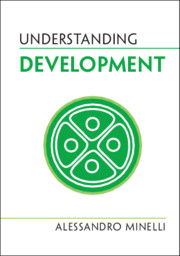Book contents
- Understanding Development
- Series page
- Understanding Development
- Copyright page
- Reviews
- Dedication
- Contents
- Foreword
- Preface
- Acknowledgements
- 1 Defining Development, if Possible
- 2 Cells and Development
- 3 Development as the History of the Individual
- 4 Revisiting the Embryo
- 5 Developmental Sequences: Sustainability versus Adaptation
- 6 Genes and Development
- 7 Emerging Form
- 8 The Ecology of Development
- Concluding Remarks
- Summary of Common Misunderstandings
- Classification
- References and Further Reading
- Index
3 - Development as the History of the Individual
Published online by Cambridge University Press: 29 April 2021
- Understanding Development
- Series page
- Understanding Development
- Copyright page
- Reviews
- Dedication
- Contents
- Foreword
- Preface
- Acknowledgements
- 1 Defining Development, if Possible
- 2 Cells and Development
- 3 Development as the History of the Individual
- 4 Revisiting the Embryo
- 5 Developmental Sequences: Sustainability versus Adaptation
- 6 Genes and Development
- 7 Emerging Form
- 8 The Ecology of Development
- Concluding Remarks
- Summary of Common Misunderstandings
- Classification
- References and Further Reading
- Index
Summary
An individual’s growth from egg to adult is a story of development, but development is not only that. In asexual reproduction, the new individual is formed not from an egg but from a bud or a simple fragment of the parent. In cellular slime moulds, a multicellular phase forms by aggregation of isolated cells. These examples reject the common view that at the beginning of an individual's development there must be a single-celled bottleneck. In some organisms, e.g. the colonial sea squirt Botryllus, morphologically similar individuals generated sexually or asexually develop through very different stage sequences. The identity and individuality of a developing system and its relations with the close environment are often problematic. One egg may produce not one embryo but two or more, up to a few thousand (polyembryony). Many developing systems are associated with non-living materials serving as a scaffold, e.g. the dead wood in a tree trunk. Some developmental systems are chimeras, including cells of two or more distantly related organisms, e.g. the fungus and the alga in lichen symbiosis. Plant galls, too, are peculiar developmental systems, especially those induced by insects.
Keywords
- Type
- Chapter
- Information
- Understanding Development , pp. 36 - 53Publisher: Cambridge University PressPrint publication year: 2021



